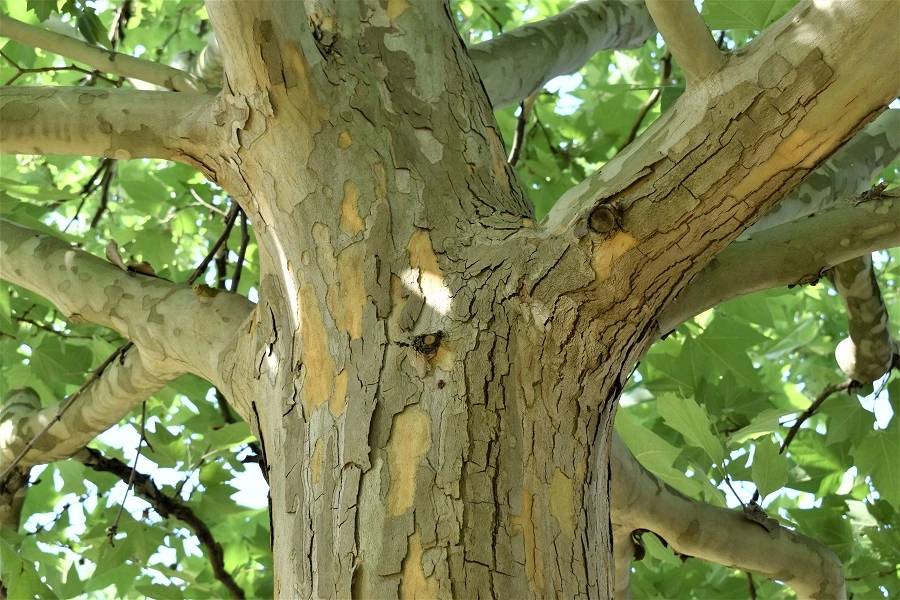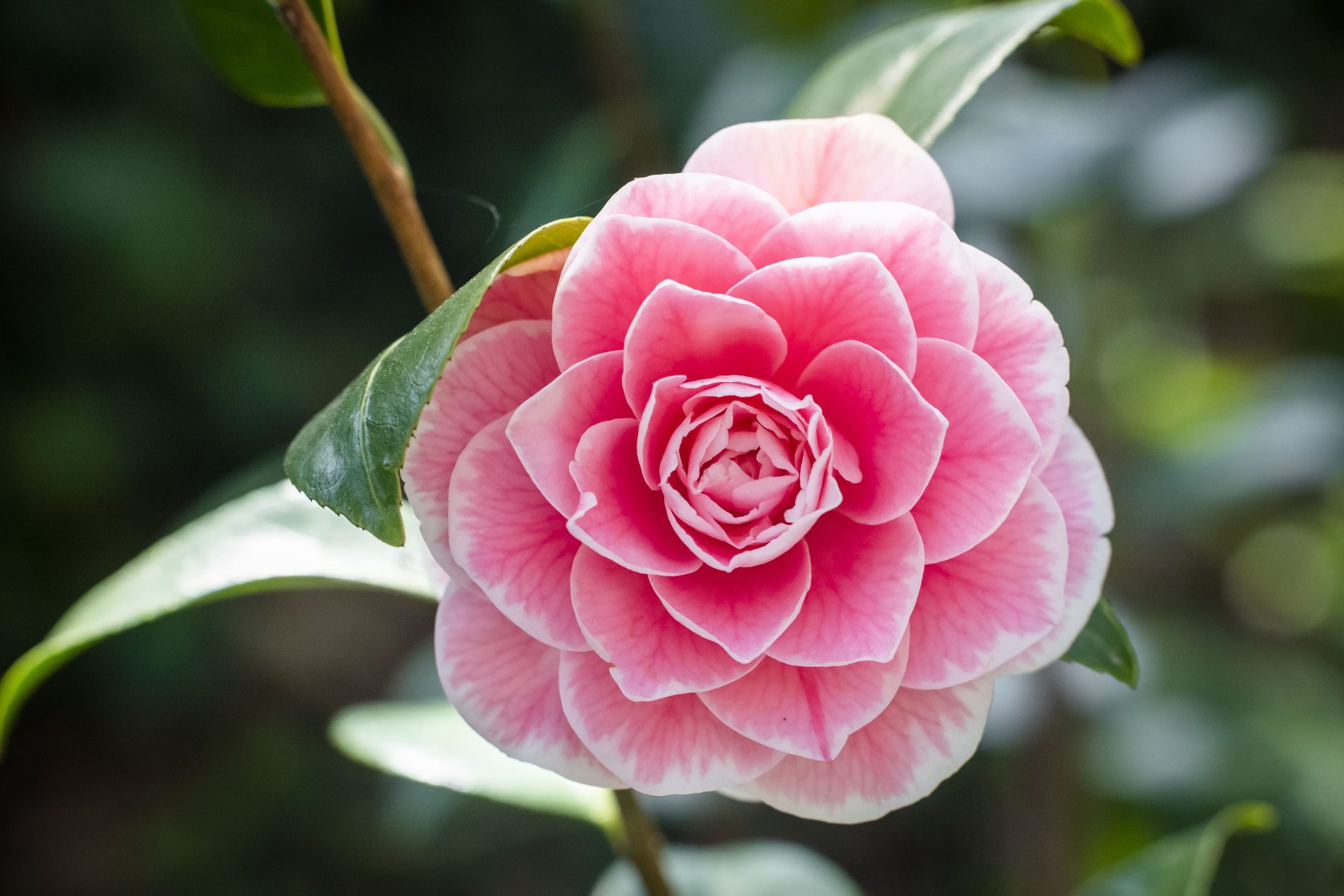The Plane Tree
Here we can admire a majestic plane tree, a hybrid cultivated from Platanus occidentalis and Platanus orientalis.
It is a magnificent plant with large branches and large leaves. It has a straight trunk mottled with white, grey, and brown. The plane tree is described by Paul Valéry with words such as pure, docile, with pure arms. The plane tree is very common in our cities and was introduced in Piedmont during the Napoleonic era. During that period, the great tree-lined boulevards, inspired by the avenues of Paris, were created in Turin. Even today, the plane tree adapts very well to urban life due to its ability to thrive in polluted air. Its bark, which tends to peel, does not conform to the tree’s rapid growth and falls off in large flakes; this allows the tree to shed fine dust and not be suffocated by pollution.
Platús, from which platanós derives, means wide and flat in Greek. This resemblance made it sacred to the Great Mother, the goddess of Crete who was depicted with the five fingers of her open hand in the act of blessing.
An ancient plane tree grows on the Greek island of Kos, near the ruins of the sanctuary of Asclepius and the sacred grove of Apollo. Its enormous branches, supported by ancient columns, cover the entire square that was home to the medical school founded by Hippocrates, who is said to have held his lessons and treated his patients in the shade of the plane tree. The tree appears in the Iliad with an oracular function. In the story of Odysseus, the Achaeans, who are about to leave for Troy, find themselves under a plane tree when, suddenly, a serpent appears. This analogy with the serpent is likely related to the renewal of the tree's bark, which, like the skin of the animal, changes every year and becomes a symbol of regeneration.

Here we can admire a majestic plane tree, a hybrid cultivated from Platanus occidentalis and Platanus orientalis.
It is a magnificent plant with large branches and large leaves. It has a straight trunk mottled with white, grey, and brown. The plane tree is described by Paul Valéry with words such as pure, docile, with pure arms. The plane tree is very common in our cities and was introduced in Piedmont during the Napoleonic era. During that period, the great tree-lined boulevards, inspired by the avenues of Paris, were created in Turin. Even today, the plane tree adapts very well to urban life due to its ability to thrive in polluted air. Its bark, which tends to peel, does not conform to the tree’s rapid growth and falls off in large flakes; this allows the tree to shed fine dust and not be suffocated by pollution.
Platús, from which platanós derives, means wide and flat in Greek. This resemblance made it sacred to the Great Mother, the goddess of Crete who was depicted with the five fingers of her open hand in the act of blessing.
An ancient plane tree grows on the Greek island of Kos, near the ruins of the sanctuary of Asclepius and the sacred grove of Apollo. Its enormous branches, supported by ancient columns, cover the entire square that was home to the medical school founded by Hippocrates, who is said to have held his lessons and treated his patients in the shade of the plane tree. The tree appears in the Iliad with an oracular function. In the story of Odysseus, the Achaeans, who are about to leave for Troy, find themselves under a plane tree when, suddenly, a serpent appears. This analogy with the serpent is likely related to the renewal of the tree’s bark, which, like the skin of the animal, changes every year and becomes a symbol of regeneration.
